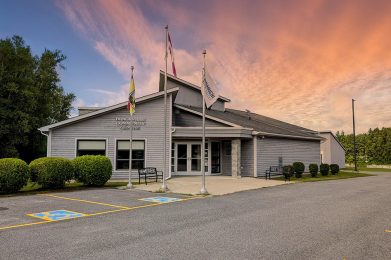Community News
Green paper on local governance reform released; public input sought
FREDERICTON, (GNB) – The provincial government today released a green paper on local governance reform that officially transitions the reform process to the engagement phase.
Working together for Vibrant and Sustainable Communities is designed to present options that will foster discussion with New Brunswickers on how to improve the local governance system. Currently, there are 104 local governments, 236 local service districts and 12 regional service commissions in the province. However, more than 30 per cent of the population does not have elected representation on a local government.
“We begin today a conversation on how to modernize a decades-old system to better meet the needs of New Brunswickers,’’ said Local Government and Local Governance Reform Minister Daniel Allain. “We have far too many entities, which creates duplication, and some areas of our province are having difficulty maintaining basic services, such as fire protection.”
Allain said in order to thrive and grow, the province needs resilient and financially viable communities and regions which offer high-quality services.
The four pillars outlined in the green paper that will guide the discussion are:
- New Brunswick’s current structure;
- regional collaboration;
- land-use planning; and
- financing the local governance system.
There are several opportunities presented under each pillar in the green paper.
- For example, under the province’s current structure, the importance of bringing democracy to local service districts by establishing new or reconfigured local governance entities is presented as an opportunity.
- On the topic of regional collaboration, one of the opportunities identified is strengthening the mandate of regional service commissions to provide additional services, such as tourism, economic development, adaptation to climate change, solid waste collection, and recreation.
- Under land-use planning, the green paper identifies as an opportunity providing land-use planning tools that are flexible and able to address planning issues such as inclusionary zoning.
- On the topic of financing the local governance system, one of the opportunities presented is lowering the provincial property taxes on non-owner occupied residential and non-residential properties, while providing additional rate flexibility to local governments for different classes of property.
In keeping with COVID-19 guidelines, public engagement will be conducted virtually. A schedule of stakeholder and public meetings will be released in the coming weeks. People can provide input by email to , or by mail to the Department of Environment and Local Government, Box 6000, Fredericton, N.B., E3B 5H1, attention Local Governance Reform Team.
Stakeholder and public feedback and analysis will be incorporated into a white paper, which will be released by the end of 2021.
“Meaningful dialogue is a priority as we move forward with local governance reform. I invite all New Brunswickers to take the time to read our green paper and to be part of this very important conversation,” Allain said. “I have already talked to hundreds of people since last fall, and I am looking forward to continuing the conversations with residents, local service district representatives, local governments, regional service commission representatives, municipal associations and other stakeholders about their priorities.”
An advisory committee on local governance reform, composed of representatives from local service districts, local governments and regional service commissions, has been created and will continue to meet throughout the process. In addition, four working groups, one for each pillar, will be created in the coming weeks.
More information on the local governance reform process is available online.
06-04-21





